Training to become a paramedic is hard, and it's nearly impossible to do all the work yourself. If you're struggling to understand all the necessary paramedic concepts, or need help with seemingly basic but hard to understand questions about becoming a paramedic, or you'd just like some additional help or reading before you take the National Registry examinations, here is some good resources for you. No need to thank us later. Informed Publishing makes several excellent pocket guides for EMS and critical care, as well as Incident Management and Firefighting. Many of their pocket guides are also available on both iOS and Android devices. For a full list, see their website. Emergency Stuff has a full list of books and materials for EMTs, Paramedics, and students, as well as a variety of prep materials for students or potential students. While the American Heart Association (AHA) publishes primarily materials for use in their courses, there are a couple of truly must-have items from them. If your course does not provide these, it is worth your while to grab the AHA's Handbook of Emergency Cardiovascular Care for Healthcare Providers. This spiral-bound flip book has all of the relevant materials and explanatory information for all of the ACLS and BLS algorithms, as well as the Acute Stroke and Acute Coronary Syndrome algorithms, and includes all of the medications referred to in the ACLS guidelines as well as several others that come in handy. Also highly recommended is a pocket reference book for medications. Brady publishing has an aptly-named Drug Guide for Paramedics, which fits in the cargo pocket of most EMS pants, and is an excellent guide to the medications used in EMS. Not every jurisdiction uses every medication in the book, so your course may not include some medications they cover, but even if you don't use them in your system you might interface with EMS systems or with ERs or other care facilities that do. Galls offers a wide range of Fire, EMS, and police clothing and equipment, as do Quick Medical and others. Many agencies that employ paid (sometimes called "career") employees will also offer either a stipend for uniforms, or will provide part or all of the official uniform through their own process. Some agencies also provide all of the materials used on a daily basis at work, and will not permit personal equipment to be used on the job (this is often due to liability). Others, however, especially in rural regions or where service is provided by volunteers, may ask their employees to provide specific equipment when the are on duty. For specific guidance, contact your agency.
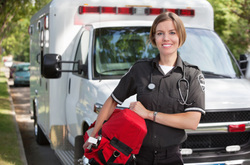 While you may well be excited to start your paramedic course, it's essential to recognize exactly what you're undertaking, in addition to how to carry out doing it. For instance, do you realize how much money paramedic classes cost? Do you know what the minimum age qualifications are for every school that you're interested in applying to? Are you mindful that some academic institutions necessitate written referrals and in-person conversations? Or that many schools or ambulance services may not be interested in your services if you have been charged or declared guilty of an unlawful act? There are a whole lot of small matters to be familiar with when it involves understanding the best ways to become a paramedic. So let's review them here. To begin, let's begin with just one important thing to know: As of January 1st, 2013, all students who are interested in obtaining national certification from the NREMT are going to now be called for to have graduated from an accredited paramedic program. To discover accredited programs, make sure to visit CAAHEP.org. With that said, as far as each school is concerned, there are a number of prerequisites students must fulfill before having the chance to be genuinely considered for any training program. And although each paramedic program is unique, the overall prerequisites are as follows: You need to be 18 years or older. You additionally need to have graduated from high school or earned your GED. You'll need a legitimate driver's license. You must already have EMT certification. That does not mean, necessarily, that you must have Emergency Medical Technician work experience (though many paramedic programs encourage students to get the job done as an EMT first before taking paramedic classes). You need to get CPR certification. You'll also possibly need to have already taken an anatomy and physiology course. If you haven't accomplished this, kindly call the school you're interested in applying to. It's fairly possible that they provide an anatomy and physiology course as part of the overall paramedic program. A few programs may also ask their prospective medics to have an Advanced Cardiac Life Support certification, too. You will also need to be able to prove that you're a healthy individual. That means you'll need to have had a physical exam, as well as provide verification of multiple immunizations. You will need to be vaccinated for illnesses like Tuberculosis, Hepatitis and Measles, Mumps and Rubella to name a few. You'll additionally need to pay for an application fee to each program you apply to, which can range in cost based on where you apply. Now that you have a better awareness of how the application process for becoming a paramedic student works, you may well be questioning tuition cost. The truth is that the cost of paramedic class varies greatly. With that said, you can count on paying anywhere between $ 1,000 and $ 10,000 for a paramedic program. Course length can be different too, as there are a vast selection of programs colleges offer. Some programs may give students weekday classes. Some other programs may provide more overall flexibility with a Saturday and Sunday class. Some schools even supply Internet paramedic training. What that usually means is that a Hybrid Paramedic Program is being provided to pupils, allowing them the chance to learn both in the school room as well as over the Internet. This is obviously extremely advantageous if you possess a day job or you are the prime caretaker in your family. With that said, paramedic courses can take anything from 6 months to about two years to complete. Depending on the program, you may graduate the training class with either a certification or an actual degree. It's definitely worth briefly pointing out what occurs once you've in fact finished a paramedic training program. Following graduation, you'll very likely want to find employment, but you need to do a couple of things first. One, it is highly recommended that you fill out an application for national certification with the NREMT. To do so, you need to pass the NREMT examinations, which is both a computer adaptive exam and a skills examination. Nevertheless, passing the national registry paramedic exams does not mean that you're qualified to work as an EMT-P on the state level. It's just a national acknowledgment. To be a candidate to work as a paramedic in your state, you'll have to apply for state licensure. This might often be as straightforward as filling out some paperwork and forwarding it to your state's EMS agency, or a lot more involved, necessitating that you to successfully pass a state test. To learn more about paramedic training, be sure to visit Paramedic Training Spot!
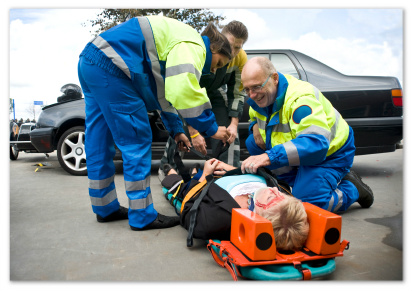 It's great that you've made the decision to become an Emergency Medical Technician, but now, the backbreaking work gets under way. And unfortunately, the solutions to oft-asked inquiries aren't easy to come by. How exactly do I get educated to become an Emergency Medical Technician, anyhow? How do I ascertain what program to apply to, or what requirements programs have in place? Is there a minimum age prerequisite? Are there specific recognitions which are obligatory? The truth is that every single school (and every single state) has their own checklist of requirements that they're seeking in a student. Therefore, the applying procedure can change from program to program. With that explained, there are a few standard prerequisites that are already in effect. Here in this article, we'll go over these requirements in hopes of breaking down the EMT training procedure, which we know can appear a little bit intricate. First, let's start with just the fundamentals. Though every program might be relatively different, in most cases, you must be eighteen years old to apply to an EMT training school. Although you are required to be eighteen, you are not required to hold a college degree. Among one of the excellent aspects of becoming an EMT is that the profession of an Emergency Medical Technician does not call for a lot of training or experience. While various jobs typically may require you to hold various degrees, anytime you apply to an EMT training program, you only need to have a high school diploma or GED. With that stated, you will certainly also need to have an authentic vehicle drivers license. And with the basic EMT job description requiring EMTs to perform CPR on individuals not able to breathe on their own, you'll also need to hold CPR certification at the Healthcare provider level. Individuals applying to EMT classes will have to be able to read at a 10th grade level or higher, too. Several programs, in their effort to make certain their students meet their standards, will require that you take specified assessment exams (like COMPASS, for example). It's also very important to bear in mind that as an EMT, you will frequently be in connection with a wide range of individuals-- both at the scene of an accident and inside of medical centers or other healthcare facilities. That means that you are counted on to be in good overall health. To demonstrate that, you'll probably be asked to provide a record of a recent physical examination. Coupled with the physical, you'll have to offer evidence that you've received various immunizations. The list of mandatory vaccinations may vary to an extent, but will likely include proof of a recent Tuberculosis immunization, along with Hepatitis and Measles, Mumps and Rubella. As soon as you're affirmed into an EMT school, you can expect to get around 100 hours of specialized training. While training is typically done in the classroom, you might also get your education in the field (on an ambulance, as an example) or in clinical settings (inside a clinic or medical facility). In comparison, though EMT training can last approximately one hundred hours, individuals interested in becoming a paramedic can expect to get 1,300 hours of training. When you graduate from your EMT training program (which will take anywhere from 3-6 months on average), you'll most likely want to take the NREMT exams. The NREMT certifies EMT and paramedics on a nationwide level. While getting national certification by itself doesn't authorize one to truly work in the state of their choice, the intention of the NREMT is to ensure that that all EMS workers responsible for healing patients are capable to work. The NREMT exams consist of a computer adaptive test and a skills test. After you pass the examinations, (and are ready to operate as an EMT), you'll then want to apply for a state EMT license. To receive a state license, you'll want to apply to the EMS agency in your area. The application process can often be as simple as providing some required documents to the agency for evaluation, or as complex as taking an obligatory state test to secure your license. When both your EMT certification and state license have indeed been acquired, you're then allowed to hunt for a job and ultimately get employed as an Emergency Medical Technician. If you already understand everything there is to know about EMT training, and are now interested in learning more on how to become a paramedic, be sure to visit http://paramedictrainingspot.com!
 Among one of the outstanding things about becoming an EMT is the reality that contrary to other roles or careers, a person doesn't need to enroll in EMT training courses for very long prior to graduation day. In fact, EMT Basic students usually enjoy around 100 hours worth of training. In contrast, about 1,000 training program hours are required to be an EMT-I, although paramedic pupils can count on their program to last approximately 1,300 hours or more. But just how do you indeed develop into an Emergency Medical Technician, you ask? Excellent question, so let's talk details. To begin, a future EMT student will merely need to have earned a diploma from high school (or obtained their GED). So if you're worried that you never attended higher education (or went to college yet never got the opportunity to graduate), do not stress. A twelfth grade diploma is sufficient. Secondly, nearly all EMT programs require their students to hold cardiopulmonary resuscitation certification, or CPR certification. To discover a venue in which you can participate in CPR courses and receive your certification, visit heart.org for more information. Practical knowledge of anatomy and physiology is vital to becoming a good Emergency Medical Technician, so in case you're still in high school or are maybe a bit older, you really should think of checking out a training course that teaches anatomy and physiology. Supposing that you aren't able to enroll in one, again, don't stress. Plenty of EMT courses supply their students anatomy and physiology classes, too. In addition to learning in the class, you may also be trained in things such as disaster management or ambulance operations. Although a ton of this is taught through didactic instruction, a program can also put students in medical and/or field settings, also. EMT training courses can easily change in length quite a bit. Even though we mentioned previously that courses average out to be about one hundred hours in length, some schools provide a number of unique choices to students, depending on how much time one has or how quickly one may want to graduate the training course. The majority of courses meet Monday through Friday. The courses can typically be held in the evenings, too, which can possibly be helpful if you hold a day job or various family responsibilities. Several EMT programs may provide Saturday or Sunday classes, as well. Sometimes, a weekend course can be wrapped up in a lot fewer weeks compared to the late night courses, however that's due to the fact that the hours may well be 8 to 5, as opposed to weekday nighttime classes that could just meet for a few hours every day. And finally, there is what's frequently referred to as accelerated EMT courses. The advantage of an expedited course is that you are able to graduate the program quickly, usually within 3 to four weeks. Also, when applying to an EMT course, there are a number of routine prerequisites you'll need to stick to, like getting specific immunizations (such as Hepatitis B, Measles-Mumps-Rubella, and Tuberculosis), verification of a recent (inside the last 12 months) physical exam, and subjecting yourself to a criminal background check. As for shelling out money for EMT school, financial aid is almost always readily available to students who are in need of it. At the end of an EMT training course, certification is awarded. Emergency Medical Technician certification, in a large number of states, is good for two years. Immediately after those 2 years have expired, people will have to remember to recertify. This typically includes enrolling in a refresher course or receiving 24 hours worth of continuing education. Dependent upon the location you reside, you could be required to take a standardized regional assessment exam every couple of years, also. To learn more about EMT programs, be sure to visit http://www.paramedictrainingspot.com.
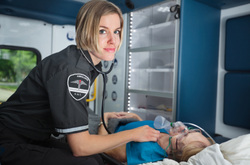 If you’re serious about a career in Emergency Medical Services , you’re most likely focused on the distinctions concerning an Emergency Medical Technician vs a paramedic. To begin the comparison , let’s first start with a general EMT job description, and afterwards we’ll learn about the responsibilities of a EMT-P .
An EMT, a lot like a paramedic, cares for hurt and injured people . Often turning up on the scene inside of an emergency vehicle , an EMT reacts to emergency medical calls to 911. They furthermore move patients to medical centers or other medical facilities.What an EMT is trained to do once turning up on the scene depends upon both their education and training, along with the ailment of the patient. An EMT can help a patient by bandaging up a serious wound or injury, for example , or conduct CPR if said patient doesn’t appear to be inhaling and exhaling on his or her own.
Sometimes patients may not be in the position to communicate appropriately with the EMT on scene (there could be a language barrier , the individual may very well be incomprehensible, or the patient may very well be unconscious), and in those instances , it’s necessary for an EMT to be able to assess the patient’s condition and make a immediate judgment call under pressure.
You will find a wide range of levels of EMT, and they change according to your geographical area . In most cases , however, individuals that enroll in EMT training school will often see programs broken down by the following labels :
EMT B : An EMT Basic responds to 911 calls for emergency medical attention , takes care of patients on the scene, and transfers patients to a medical center or medical facility. They are effectively qualified to evaluate a patient’s affliction and manage a variety of emergency situations .
EMT Intermediate: This may also be called EMT Advanced. Some states may possibly reference this label as an EMT II or EMT III.
Whatever the case , an EMT I has received EMT Basic training, but also is educated in advanced skills such as the use of intravenous fluids as well as a number of medications .
So in the EMT vs. paramedic discourse , what’s the actual difference between the 2 jobs ?
Ultimately , the most important variation is the fact that paramedics supply their patients with increased prehospital attention than EMTs do. And that’s simply because they’re equipped with a lot more skills and training .
A paramedic, as an example , can supply patients with medications both orally and intravenously (which means that a paramedic can puncture a patient’s skin using a needle to administer medication). They’re also qualified to use EKGs, which is short for electrocardiograms. An electrocardiogram is commonly used to evaluate a patient’s heart function.
These are generally things an EMT simply cannot do .
It’s also essential to understand that becoming a paramedic calls for far more training and knowledge than that of an EMT. That implies that a paramedic training course is commonly costlier than EMT training, as well .
Paramedic courses are usually lengthier , also . While many can often become an EMT in just a few months, a paramedic program may take a passionate student between six months to 2 years to finish .
So, ultimately , is it really worth training hard to become an EMT or paramedic? Well, that depends somewhat on your personality type, in addition to the long-term job outlook for these particular 2 careers in EMS.
Although it is not essentially needed , it will help if an EMT or paramedic is dedicated to aiding their fellow woman or man . EMT and paramedic wages isn’t much when compared with several other occupations , so it greatly helps to like assisting people make it through difficult times .
When it comes to the career outlook for Emergency Medical Technicians and paramedics , it genuinely couldn’t be any nicer .
As reported by the US. Bureau of Labor Statistics, employment of EMTs and paramedics is anticipated to flourish thirty three percentage points between 2010 and 2020. So despite the fact that many other jobs and employment opportunities get transferred overseas or replaced by modern technology , there is still an expanding need for EMTs and paramedics throughout the United States .To learn more about becoming an EMT, as well as paramedic training, please visit http://www.paramedictrainingspot.com!
 Anytime you're researching paramedic schools and training courses, it’s typical to have many concerns about the application process. Am I too old to be a paramedic? How much cash does a paramedic make? Can I get a job as a paramedic in America if I was born beyond the borders of America? Can you train to be a paramedic if you’ve been charged with a crime? Still, most significant questions prospective paramedic students have centers on past college experience. Individuals thinking about seeking paramedic training want to know one important thing: Do I need to go to college to become a paramedic? And do I need to graduate a paramedic program with a college degree in order to become a medic? Or is becoming well trained with advanced life support skills sufficient to obtain a job working on an ambulance truck? The answer, fortunately, is that a prior college degree isn't needed to become a paramedic, nor is it essential in order to apply to a paramedic training course. The job of a paramedic is truly one of many positions in America that, while significant training is needed, doesn’t require a college degree. So yes, a youthful person directly out of twelfth grade could hypothetically become an EMT and then apply for paramedic training without needing to provide the school or program a copy of their college degree. That being said, a lot of schools that supply paramedic training desire that students possess prior work experience as an EMT, as that usually makes students a lot more able to succeed in clinical rotations or field internships. In fact, you can enroll in a paramedic program that simply offers you a Paramedic Certificate, allowing you to then take the NREMT exams and apply for state licensure. However, there are many benefits to graduating paramedic class with a college degree. The advantages are the following: The primary advantage concentrates on take home pay. Earning an Associate’s Degree in Paramedicine Science, for instance, permits you to show a potential employer that you’ve effectively excelled in a longer, more comprehensive paramedic program. You’ve received more training, experienced additional hours of instruction and received far more clinical supervision compared to others in your particular field. This could possibly give you a advantage within an already competitive employment market. And with the everyday paramedic earnings being about $38,000 every year, any scenario that can give you a leg up with regards to both job security and annual salary is ideal. The next benefit to a paramedic degree is work advancement. Working as a paramedic is a wonderful and satisfying experience, but it can also be a stepping stone to other professions in health care, like a physician’s assistant (PA), a registered nurse (RN), or an EMS educator. Not only will an Associate’s Degree support you with a better job, but academic expansion too, if you choose you’d like to transfer to a 4 year college. So is a paramedic degree required for potential students? The answer is no, it's not necessarily. But students who decide to remain in school longer to receive a college degree related to their paramedic schooling (rather than a certificate) can certainly benefit far more by having extra career opportunities over time. Need to know more on how to become a EMT Paramedic? If so, be sure to drop by http://www.paramedictrainingspot.com when you get a chance!
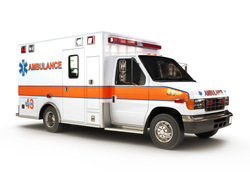 Understanding how to become a paramedic can be tough, because various schools have unique requirements for their applicants. Not just that, but different states have numerous requirements for their working paramedics too, thus muddying the waters for anybody interested in learning how to become a paramedic but uncertain ways to get accurate and pertinent facts about the subject. To become a paramedic, you must first meet the criteria set by both the state and also the school of your liking. You will then need to graduate from a paramedic school, where you will take the NREMT-P exams and/or a state licensing examination. Once you formally obtain credentials through an EMS agency in your state, you’ll be capable of working as an EMT-P. If you’re interested in chasing a career as a paramedic, let us discuss three actions you ought to really think about taking. 1) Learn the Requirements Requirements vary from state to state, but typically, the eligibility demands for many paramedic schools and programs are the following: You should be 18 years of age. You will need to be a high school graduate, or possess a GED. You ought to have a valid driver’s license. You will need to have specified certifications (CPR, for example). You need to be a licensed EMT (despite the fact that real EMT experience isn’t often a necessity). From that point, the prerequisites for becoming a paramedic could vary greatly. For instance, in a state like The Lone Star State, you may be requested by a paramedic program to take the THEA test (Texas Higher Education Assessment), or perhaps an approved alternate examination like COMPASS. In some states, because you ought to be no less than 18 years old in order to enroll in a paramedic program, students will actually require an Associate’s Degree or more to become licensed to practice. 2) Apply to a Paramedic Program Figuring out which school to apply to is usually confusing, but it’s all about picking out a school which you believe gives you the ideal education and instruction. Whatever school you choose, it’s encouraged that most paramedic students give consideration to enrolling in an accredited school or program. Come January 1, 2013, all prospective paramedics who want to become Nationally Registered must have graduated from an accredited paramedic program in order to do so. 3) Graduate. Get Certified. Acquire Your License. When you finish a paramedic program, you’ll most likely want to become nationally certified from the NREMT. This necessitates passing the NREMT exams, which comprise of both a computer adaptive examination and a skills test. Passing the NREMT exams is a demonstration of meeting a national certification norm. It also gives you significantly greater flexibility in the event you move to a different state and submit an application for reciprocity (provided it’s a state that accepts the National Registry as their standard for admittance and licensure). But becoming Nationally Registered does not give you consent to work. Only the state you plan to work in can do that, and that’s through licensure. Getting licensed might sometimes be as easy as giving the state a copy of one's NREMT card. Some states, nonetheless, demand those attempting to get licensure to pass a state test. The paramedic in you is just waiting to be developed. To do so, visit http://www.paramedictrainingspot.com to learn the requirements needed by all working paramedics. You'll also be able to find accredited paramedic training programs, as well!
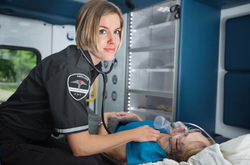 Despite the fact that it’s typically not a requirement to have work experience before registering for a paramedic course, it is always extremely helpful. In fact, despite the quality education you’ll be given in the classroom, or perhaps the supervision you’ll get throughout clinical rotations, there’s really no replacement for actual work experience, specifically when it comes to executing patient assessments. Having said that, individuals who want to become a paramedic can still earn beneficial experience that can better ready them for paramedic school. It’s true that the job of a paramedic can never be simulated in any other venue, but we’ve defined a few very helpful ways for you to plan for what the life of a paramedic will ultimately be like. It’s worth noting that these ideas are simply just ideas, and so they in no way are bound to help you progress in paramedic school, successfully pass the NREMT exams, or be a top quality paramedic on an ambulance truck. 1) Work As An Emergency Medical Technician This is the most apparent solution to attaining work experience, but if you’re a certified EMT and are thinking about eventually becoming a paramedic, actual job experience is excellent. Although EMTs aren’t allowed to give drugs by mouth and intravenously, and should not use medical devices like an EKG, you will still acquire vital experience in assessing a patient’s affliction, in addition to managing a wide array of unforeseen emergencies. You’ll also discover exactly what a average day is like for an EMT or paramedic, comprehend the amount of hours that they work, and experience the importance of making quick decisions under strain. 2) Becoming a Volunteer EMT Though making a salary as an EMT is good, a number of companies would prefer to employ people who have previously obtained some work experience. And a fantastic way to obtain that experience is via volunteer work. Regardless of whether it’s a ride-along via a nearby fire division, or making an effort to deliver efficient emergency medical care through an ambulance service, working as a volunteer is a priceless experience that will extend your understanding of Pre-hospital Care management, especially in how it works in conjunction with the Emergency Department. 3) Become a Lifeguard For people with desires of being a paramedic, but are under the age of 18, there's still a method that you can obtain valuable experience with regards to saving lives in high-pressure scenarios. Get hired as a lifeguard. Being a lifeguard may seem like a cushy job for a young adult, but there’s a great deal of responsibility that is included with the job. Not only will you be in charge of the security of numerous people at a swimming pool or beach, but a lifeguard also needs to work 20-40 hours weekly after having been well-trained for the job. A lot like an EMT or paramedic, a lifeguard needs to obtain a number of certifications, too. Principal among these is correct CPR certification, as well as First Aid certification. Although a lifeguard doesn’t equal a paramedic with regard to work schedule or all round responsibility, it’s a fantastic job for any youngster focused on the EMS field to gain critical communication skills, understand the significance of safety, and effectively tackle any potential medical emergency situation. Need more information on paramedic training? Want to find out more about accredited schools? Just need a simple paramedic job description? If so, look no further than http://www.paramedictrainingspot.com.
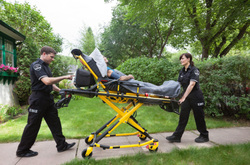 Just before you enroll into paramedic school, it’s crucial to understand whether you’re physically and mentally equipped to become a paramedic. Many men and women that want to become a paramedic do so because a few of their loved ones work in medical care, or they just love the very thought of aiding people. And although that’s remarkable, those qualities don’t necessarily signify you’re suited to become an EMT-P. Being a paramedic, you may be placed into various circumstances that involve pained people or major catastrophes. You will notice grotesque things, experience scary situations, and will need to make prompt assessments while a person’s existence hangs in the balance. A high quality paramedic will require several of the following traits to be able to have a extensive and productive career in EMS. Here are those 5 qualities paramedic or a paramedic student requires to achieve success: 1) A paramedic needs to be prepared to manage pressure and emotional stress. In athletics, commentators typically discuss outstanding players having “ice water throughout their veins” the moment the game is on the line and the ball is in their control. Precisely the same can be said for a paramedic, who may come across quite a few surprising circumstances in the field, on the ambulance truck or inside a hospital. You have got to keep a clear head rather than succumb to the pressure of the moment, as a person’s life can truly depend on your decision-making and ability to take immediate action. 2) A paramedic will need to have an iron stomach, because he or she will observe some distressing things while at work, most notably blood. If you’re somebody who gets nauseous at thinking of “blood and guts,” or doesn’t feel they’ll have the capacity to work effectively amid filthy, disgusting, and sometimes repulsive accident conditions, then you’re probably not cut out to be a paramedic. 3) You will need to not just be in good shape to become a paramedic, but have the capacity to lift considerable amounts of weight. A paramedic at an ambulance service, for example, may be required to not only lift up to 125 pounds, but additionally pull up to 150 pounds of weight and push up to 250 pounds of weight. In addition to being physically and mentally strong, the career of a paramedic requires a good deal of sitting, standing upright, and reaching too. 4) A paramedic should also take pleasure in the rush of excitement, as well as have both assertive and sympathetic characteristics. Sometimes, paramedics will need to shove their way through a crowd when on the scene. At the same time, an EMT-P must realize how to correctly speak with patients who could be scared of their situation, physically pained or afflicted with a condition. 5) You must be prepared to get small amounts of sleep in some cases. It’s not unusual whatsoever for a paramedic to work a full day straight, and then be given the subsequent two days off. As previously mentioned, a paramedic should take pleasure in the rush of excitement. But with that excitement comes unknown circumstance. A paramedic rarely knows the specific situation she or he may experience during a given working day, as it’s possible to be jeered, bombarded, and even possibly hit by a automobile or shot at while working. Paramedics might also have to deal with patients who hemorrhage profusely or perhaps possess a communicable sickness, so while becoming an EMT or paramedic is incredibly satisfying, it takes a considerable amount of hard work and determination, and isn't devoid of its fair share of dangers. Still interested in learning how to be a paramedic? Wonde
 The overall approach to paramedic training is difficult. From picking out classes to determining how you can balance your school life with your own personal life, working to become a paramedic can be pretty worrying. Unfortunately for a few prospective paramedics, the very idea of working out the way to pay for paramedic classes is often equally as troubling as the paramedic curriculum itself. Dependent upon your age, you’re coping with a variety of different challenges at this time. If you’re younger, you’re energized to understand more about becoming a paramedic, but are worried that you just don’t have the funds to cover the classes because, well, you’re young and also have minimal experience. If you’re a more mature and more established person that’s now interested in pursuing paramedic training, you might be fortunate enough to have income saved away for paramedic courses. The dilemma, obviously, is everything else that accompanies an established life: monthly dues, a mortgage loan, and kids. So how can you find the money to go to paramedic school? Is it like going to college, where there are financial loans or scholarships or other ways to supplement the high cost of courses? Well, luckily, paramedic schools do provide students various forms of financial assistance. And here’s how it works. For starters, whenever a school is accredited, there’s a strong likelihood it participates in the Federal Direct Loan Program. Federal financial aid is rather essential, since it permits a prospective paramedic student to select the school that best suits him or her, as opposed to the student feeling required to decide on a school or training program only because it will fit inside their budget. Listed below are the types of financial assistance you can obtain for paramedic school: Scholarships: A scholarship is an award of financial aid uniquely given to students to help and fund their education. You’re most likely familiar with merit-based scholarships, but need-based scholarships can require students to submit financial assistance applications such as FAFSA. Grants: There are federal grants and state grants. A federal grant, for example, is given based upon monetary need by the data applicants place onto a FAFSA form. Grants are not required to be paid off. Loans: In contrast to a grant, a loan must be repaid. And as mentioned earlier, any time a school is accredited, there’s a possibility that it participates within the Federal Direct Loan Program. Federal Work-Study: A federal work-study program is a federally financed program in America that enables students to work part-time in exchange for a paycheck that they could then use to help finance their higher education. The following is the simplest way you can fill out an application for financial aid: A student should sign up for financial aid by filling out an application that’s offered at www.fafsa.ed.gov. The application is generally known as the Free Application for Federal Student Aid (better known as FAFSA). Paramedic students might also be in a position to obtain private loans to help fund their education, also. Yet again, it’s usually a wise idea to speak with an official employed in the school’s financial aid department to help sort out any questions or problems possibly you have entire process. To learn more about paramedic school, along with more information on paramedic training requirements, be sure to visit Paramedic Training Spot!
|










 RSS Feed
RSS Feed